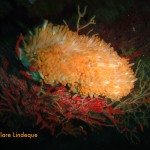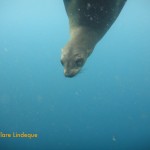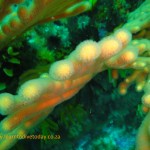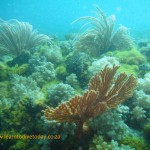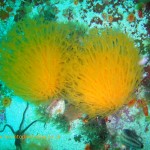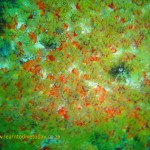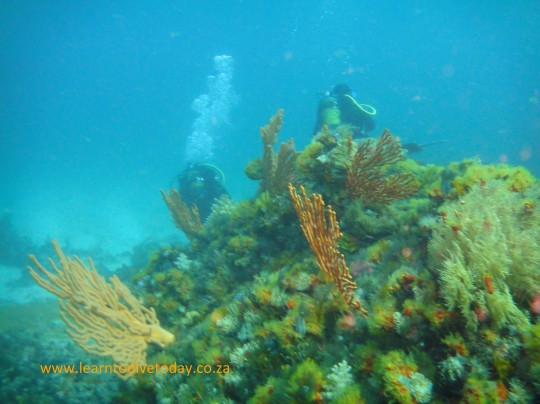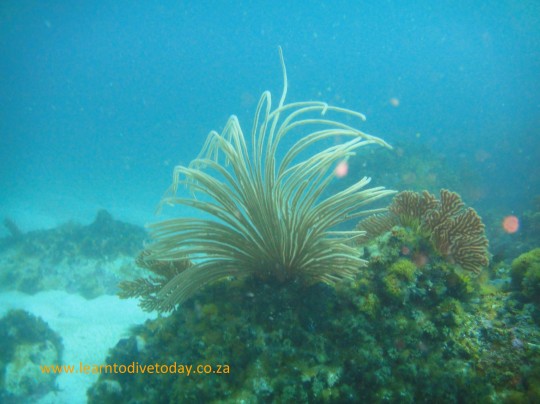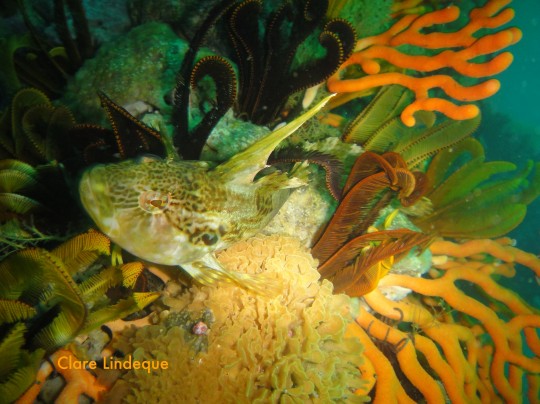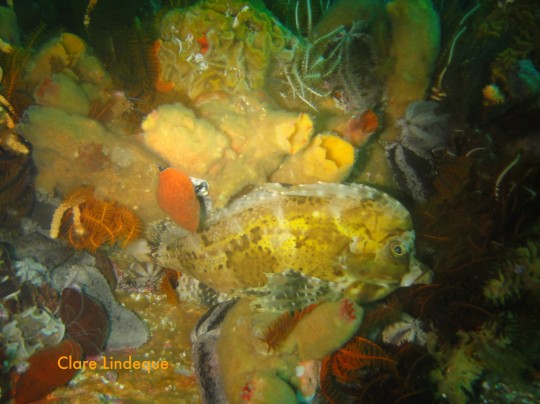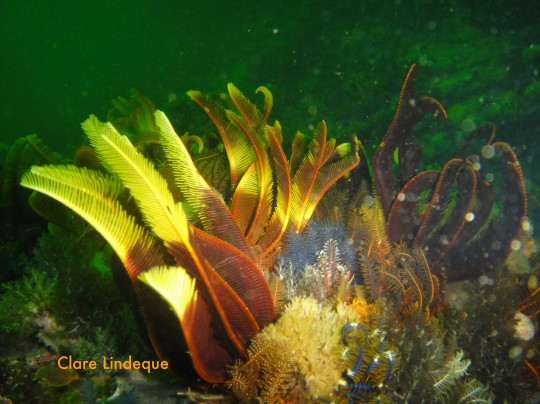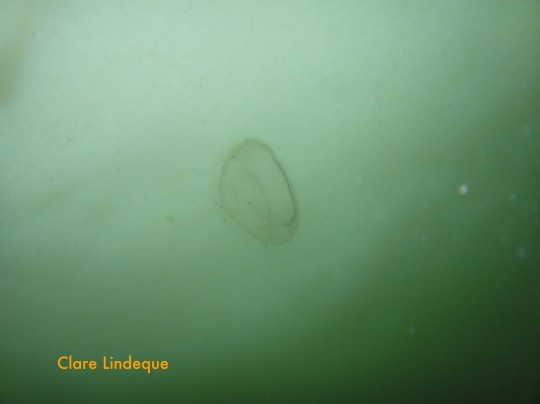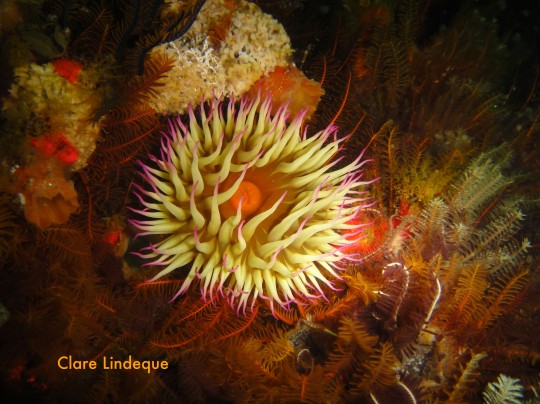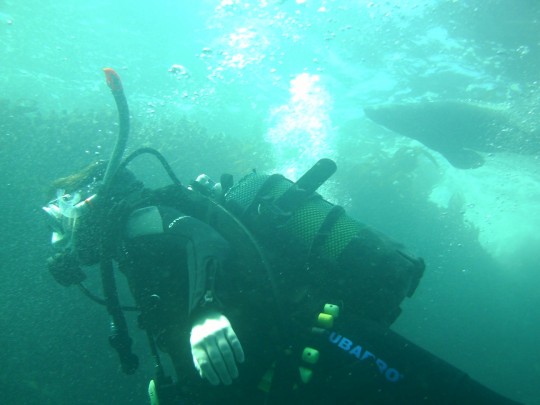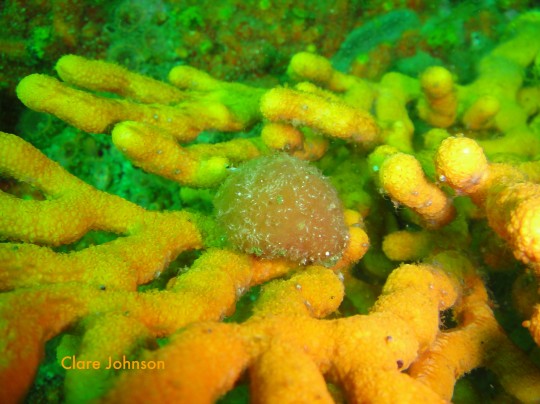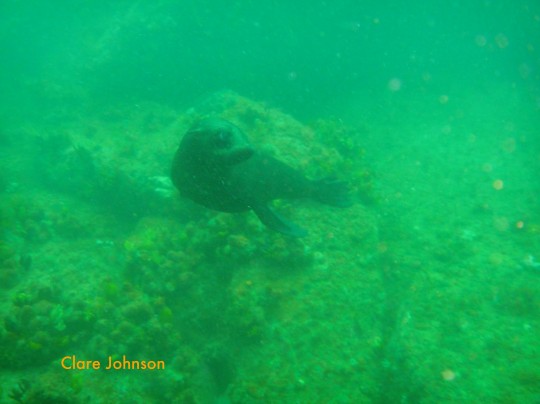
The MFV Orotava was part of the I&J fishing fleet, and was scuttled in Smitswinkel Bay in 1983. She lies alongside the SAS Transvaal, and within a few hundred metres of the SAS Good Hope, the MV Rockeater, and the MFV Princess Elizabeth. She is a steel trawler, 50 metres long and just over 9 metres wide. It’s possible to see the entire wreck in a single dive; she rests on the sand at 34 metres, leaning at a slight angle, and the top of her superstructure is at about 23 metres.
We dived this wreck two weekends in a row. The first time we had very good visibility, and to me the ship looked as though it was festooned with flowers. There are lots of steel pipes and other bits sticking up, with arches and door frames and other framing devices that make for wonderful photographic opportunities. The wreck is overgrown with feather stars, sea fans, soft corals, and other invertebrate life.
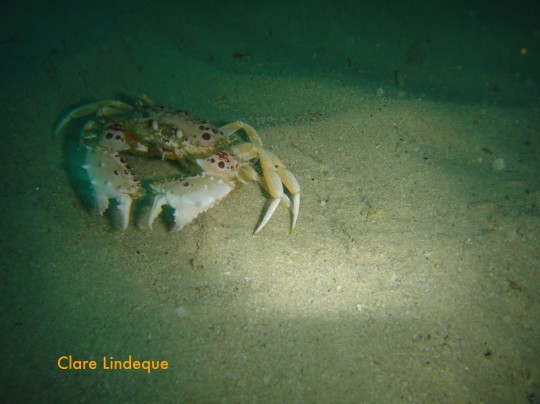
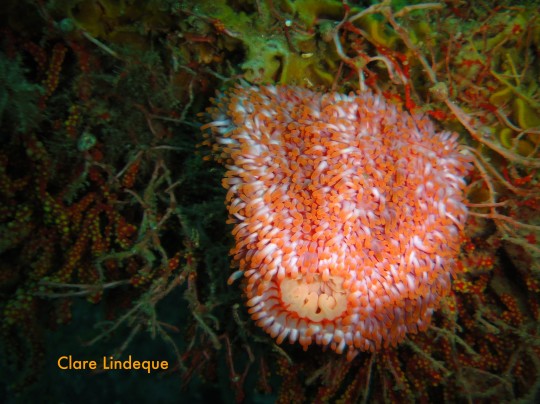
Most notable to me was the presence of multiple frilled nudibranchs. I saw these for the first time on the MV Rockeater, also in Smitswinkel Bay, but the profusion of these beautiful little creatures on the Orotava has to be seen to be believed. I probably photographed 20 unique specimens on each dive, whilst swimming over several others (with regret).
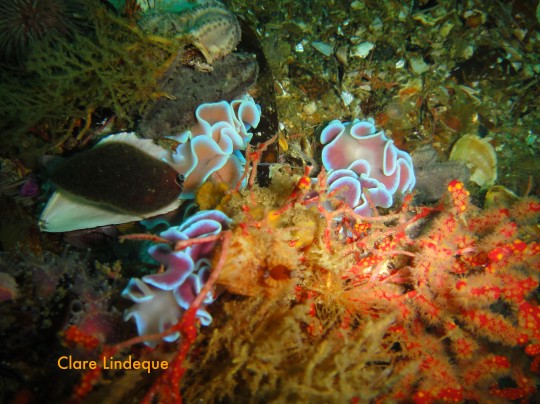
The interior of the wreck is small, tight and not really suitable for penetration. The next two photos are horrible and have no artistic merit whatsoever (even by my standards), but they are of a hole in the deck. There are vertical steel plates visibile inside the hole that were moving several feet back and forth with each wash of the surge – you can see them in two distinct positions in the pictures. Take care.
Dive date: 27 August 2011
Air temperature: 17 degrees
Water temperature: 14 degrees
Maximum depth: 30.3 metres
Visibility: 12 metres
Dive duration: 33 minutes

We returned to the MFV Orotava the following week to look for a GoPro camera lost by one of the other divers on the boat the previous week. No luck finding it, unfortunately!

On our second visit to the wreck, Tony was below me on the sand with a student doing skills for a Deep Specialty course. I hung about near the top of the hull, trying to take shelter from the surge, which was particularly violent that day. Next to me, on some small sea fans, were two baby basket stars. This is the first time I’ve seen them in False Bay (I think they are found at several of the deeper reefs towards the southern end of the bay, such as Rocky Bank) – we usually see them on deep Atlantic dives such as on Klein Tafelberg Reef.
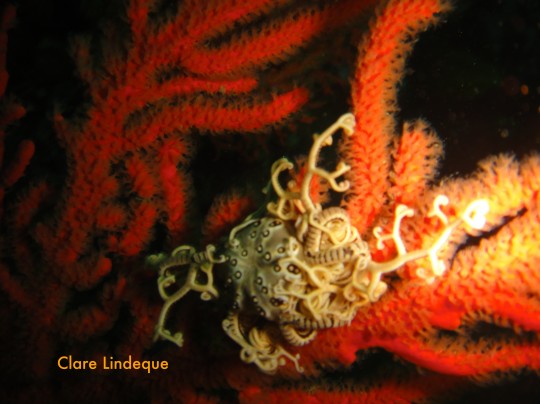
I thought the Orotava was a very pretty wreck, and look forward to returning there. Anywhere I can see my frilled nudibranchs or basket stars (!!!!) is a happy place for me.
Dive date: 4 September 2011
Air temperature: 15 degrees
Water temperature: 14 degrees
Maximum depth: 32.9 metres
Visibility: 5 metres
Dive duration: 36 minutes












